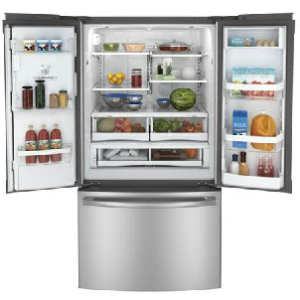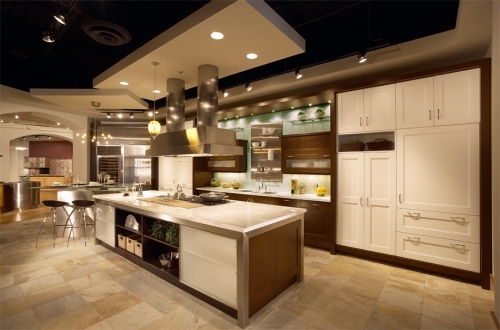If you’re setting up a new kitchen, either with a full remodel of the space or by replacing all of the major appliances, buying the right products will require the assessment of a variety of data points to ensure that each one can meet the demands of the household. When it comes to deciding on your refrigerator, the data points include:
- Energy efficiency – As an appliance that is always running, the refrigerator will represent about 14 percent of the home’s total energy expenditure, second only to air conditioning at 16 percent. By limiting the refrigerators that are under consideration to only those ranked as the most energy efficient in their product category (which will include ENERGY STAR certified products), you can reduce the cost of running this appliance and realize incremental savings each month. The EnergyGuide label, which will be affixed to each refrigerator, provides a copious amount of data that will facilitate easy energy usage comparisons between similar products.
- The size – In the decision process for a refrigerator, there are two different sizes that should be assessed; the dimensions of the space that has been designated for the refrigerator and the amount of storage capacity. Having the dimensions of the space is essential if the new refrigerator is being built-in, but is important even if the unit will be freestanding. Determining the right amount of capacity, which is the sum of the space in both the refrigerator and freezer compartments, depends on the number of people in the household and the characteristics of items that will be refrigerated or frozen at any given time. For example, a household of four people that shops every other day at the local grocery store will probably be fine with 18 to 20 cubic feet. On the other hand, if the same household shops at a warehouse store every two weeks instead, there will likely be a need for more storage capacity in both the refrigerator and the freezer.
- The door swing, particularly in small or galley-style kitchens – An open floor plan will likely be able to accommodate even the widest refrigerator door swing, but smaller spaces such as galley style kitchens may be completely cut off when the single doors of a top or bottom freezer mount are open. When space is limited, the shorter door swings of either a side-by-side configuration or a French door style can ensure that foot traffic can still move around the kitchen when the refrigerator doors are open.
With kitchens evolving into a space where family and guests gather for conversation and entertainment, even a large refrigerator can get crowded with food and beverages on occasion. If space constraints or large storage requirements threaten to stretch capacity, the addition of a specialty refrigerator designed to keep beverages, wine, and/or miscellaneous items cold can free up room in the primary refrigerator.






